Disclosure: This article contains affiliate links. We may earn a commission from purchases at no extra cost to you, which helps our travel content.
The moment my feet touched South African soil in Port Elizabeth, I knew my camera wouldn't rest for a single moment. This coastal gem, often overshadowed by Cape Town and Durban, holds a photographer's treasure trove waiting to be discovered. As someone who's documented everything from Tokyo's neon landscapes to Kerala's misty tea plantations, I was genuinely surprised by Port Elizabeth's diverse visual offerings. Alguma coisa mágica (something magical) happens when golden African light meets the Indian Ocean along Algoa Bay. Whether you're wielding a professional setup or simply your smartphone, PE—as locals affectionately call it—offers a perfect weekend photography adventure that balances wildlife encounters, dramatic seascapes, and cultural moments without overwhelming your creative senses or your wallet.
Morning Light at Addo Elephant National Park
My journey began before sunrise, driving the short 40-minute route from PE to Addo Elephant National Park. As a fotógrafo who's shot wildlife across three continents, I can confidently say that Addo offers some of the most accessible and rewarding wildlife photography opportunities I've encountered.
The park opens its gates at dawn, and this is non-negotiable timing for serious photographers. The morning light creates a magical golden glow across the savanna, rimming elephants with luminous outlines as they gather around waterholes. Unlike more famous parks where vehicles cluster around sightings, Addo often allows you the luxury of solitude with your subjects.
I positioned myself near Hapoor Dam shortly after entering, where a family of elephants created perfect silhouettes against the rising sun. My telephoto zoom lens earned its keep here, allowing me to capture intimate details like a baby elephant's playful trunk or the textured wrinkles of a matriarch's skin without disturbing these magnificent creatures.
Beyond elephants, keep your camera ready for kudu with their majestic spiral horns, warthogs trotting with tails held high like antennas, and if you're fortunate, the park's elusive lions. The contrast between red earth and green vegetation creates a natural color palette that requires minimal post-processing—something my engineer's mind always appreciates.

💡 Pro Tips
- Arrive at Addo's gates 15 minutes before opening time to be among the first vehicles in
- Bring a beanbag camera support for stability when shooting from your car window
- Set your camera to continuous shooting mode—wildlife moments happen in split seconds
Coastal Magic: Sardinia Bay's Perfect Light
After a morning with wildlife, I dedicated my afternoon to PE's spectacular coastlines. Sardinia Bay, just 15 kilometers southwest of the city center, offers what I consider the perfect canvas for coastal photography.
What struck me immediately was the quality of light. As someone who's photographed coastlines from Okinawa to Florianópolis, I've developed a sensitivity to how light interacts with water and sand. At Sardinia Bay, the combination of pristine white sand and crystal clear water creates a natural reflector effect, illuminating subjects with a soft, flattering glow.
I arrived about two hours before sunset, when the beach was nearly empty except for a few local dog walkers. The wind had calmed, creating perfect conditions for long-exposure seascapes. Setting up my travel tripod on the rocks, I experimented with different shutter speeds to capture the rhythmic dance of waves against the shoreline.
The marine protected area status means the water clarity is exceptional, creating those turquoise gradients that transition to deeper blues—a photographer's dream for coastal compositions. As the sun began its descent, the dunes behind the beach caught golden hour light, creating a stunning backdrop of shadows and highlights across their rippled surfaces.
For those seeking human elements in their compositions, the small fishing boats that occasionally dot the bay provide perfect scale against the expansive coastline. Just remember to respect the pristine nature of this beach by staying on marked pathways through the dunes.
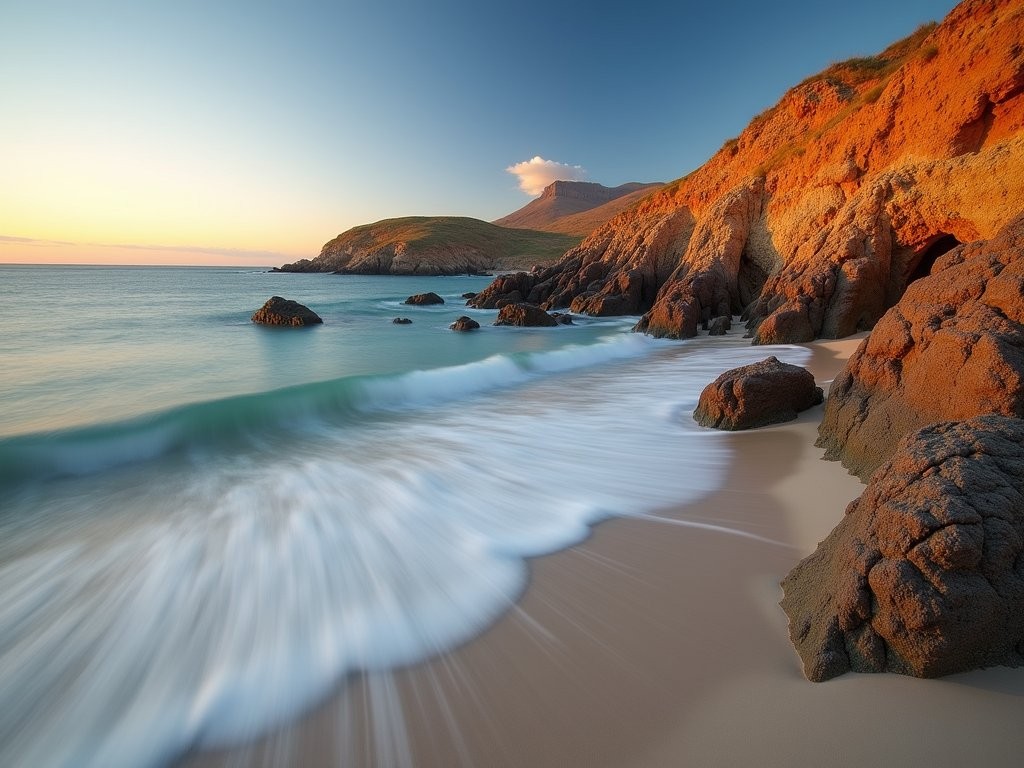
💡 Pro Tips
- Use a neutral density filter to achieve silky water effects even in daylight
- Include human elements for scale in wide coastal landscapes
- Look for natural leading lines in the shoreline to draw viewers into your composition
Urban Stories: Route 67 and Central
On my second day, I turned my lens toward the cultural heartbeat of Port Elizabeth. Route 67 offers a visual narrative of South Africa's journey to democracy through 67 public art pieces—symbolizing Nelson Mandela's 67 years of service.
As someone who constantly seeks the intersection of art and culture in my travels, this urban art trail provided endless photographic opportunities. I began at the Campanile and worked my way up toward the Donkin Reserve, deliberately shooting during mid-morning when the light creates interesting shadows across the artwork.
What makes Route 67 photographically compelling is the juxtaposition of colorful contemporary art against historic architecture. The contrast creates visual tension that translates beautifully to images. My approach was to capture both wide contextual shots and intimate details of the artwork.
The Voting Line sculpture, with its metal cutout figures representing South Africa's first democratic election, creates fascinating shadow patterns throughout the day. I experimented with different angles, sometimes shooting directly into the sun to create silhouette effects with the figures.
In Central, PE's historic district, the colonial architecture provides another layer of visual storytelling. The weathered facades tell stories of time passing, especially when captured in the right light. I found myself drawn to doorways, windows, and architectural details that showed the patina of age.
For street photography enthusiasts, the revitalized Richmond Hill area offers vibrant cafe culture and colorful Victorian buildings. Here I switched to my prime lens for its speed and discretion when capturing candid moments of local life.
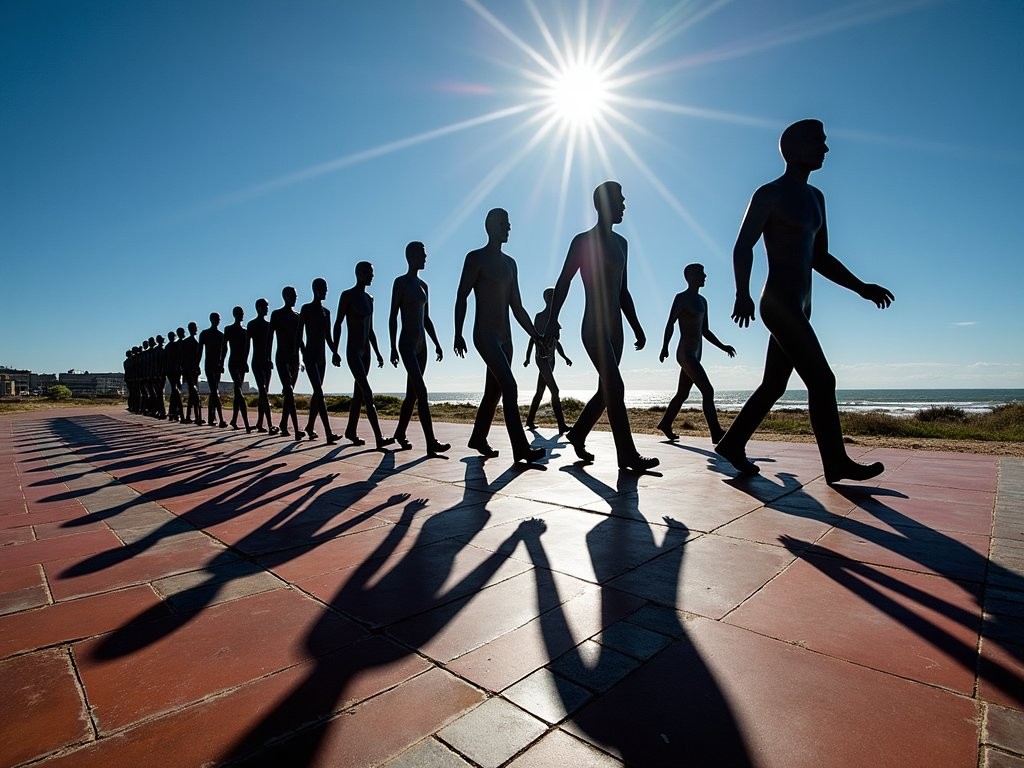
💡 Pro Tips
- Visit Route 67 twice—once in morning light and once at sunset for completely different moods
- Look for interactions between people and the public art for more dynamic compositions
- Use architectural elements as natural frames for your urban compositions
Wildlife in Action: Penguin Rehabilitation Center
One of PE's hidden photography gems is the SANCCOB Penguin Rehabilitation Center at Cape Recife. As someone who's photographed wildlife in controlled settings from Hokkaido to the Pantanal, I appreciate facilities that allow intimate wildlife photography while supporting conservation.
The center rescues and rehabilitates African penguins—an endangered species—offering photographers a rare opportunity to capture these charismatic birds up close. I arrived for their 2:30 PM feeding session, which provides excellent action shots of penguins at their most animated.
Photographing black and white subjects presents unique exposure challenges. I found spot metering and exposing for the white chest feathers prevented the common problem of underexposed penguin faces. The weather-sealed camera proved invaluable here, as the coastal location means occasional salt spray that would damage less robust equipment.
Beyond technical considerations, what moved me was capturing the individual personalities of these birds. Some were shy, others boldly curious about my camera. Patience rewards you with behavioral moments—a penguin preening its mate, juveniles playing in water, or the determined waddle of a bird returning from rehabilitation to the sea.
The center's location at Cape Recife Nature Reserve offers additional photographic opportunities. After my penguin session, I followed the nature trail to the historic lighthouse, where coastal birds soared against dramatic cloud formations. The combination of wildlife, historical architecture, and rugged coastline in one compact location makes this a must-visit for photographers with limited time.
Yeh ek adbhut anubhav tha—it was an extraordinary experience that connected me to conservation efforts through my lens.
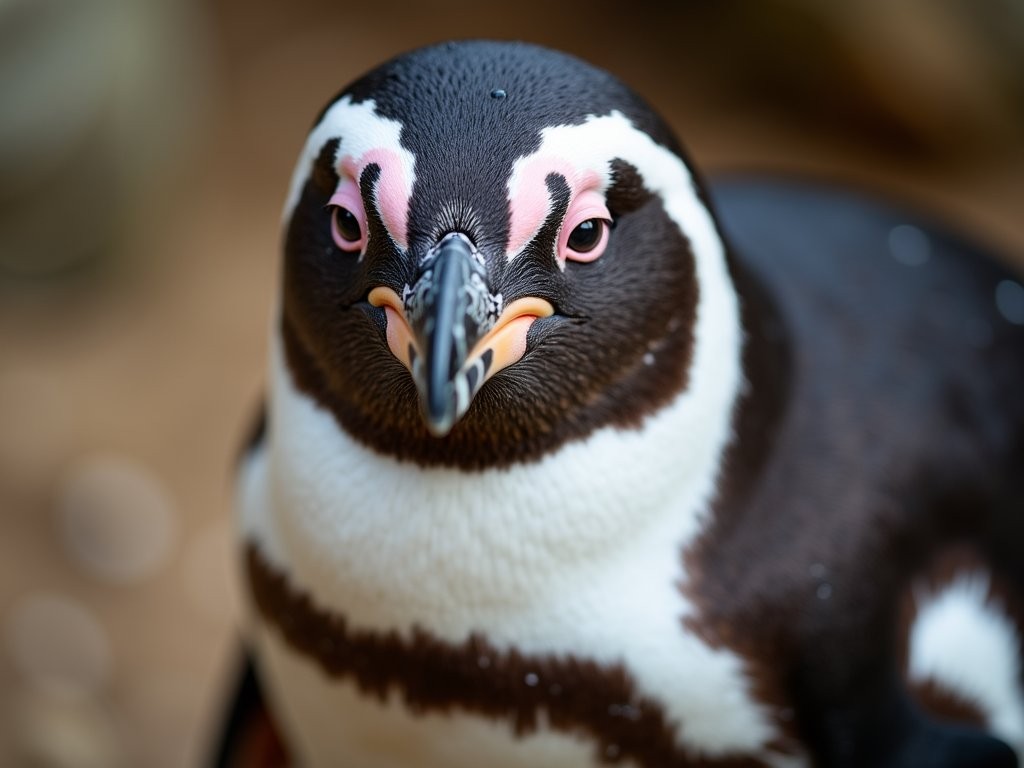
💡 Pro Tips
- Book the penguin feeding tour in advance as spaces are limited
- Bring a zoom lens that can handle both close-up portraits and action shots
- Consider a polarizing filter to cut glare when photographing penguins in water
Sunrise Safari: Kragga Kamma Game Park
For my final morning, I sought a wildlife experience closer to the city and discovered Kragga Kamma Game Park, just 15 minutes from PE's suburbs. While smaller than Addo, this compact reserve offers distinct photographic advantages—particularly for photographers seeking rhino and giraffe images.
I arrived at opening time (8:00 AM) and opted for a self-drive experience rather than a guided tour, giving me freedom to wait patiently at promising locations. The morning fog that often settles in this area creates atmospheric conditions that transform ordinary wildlife sightings into ethereal encounters.
Unlike larger reserves where animals might be distant specks requiring extreme telephoto lenses, Kragga Kamma's intimate setting means even a modest telephoto zoom will capture frame-filling wildlife portraits. I spent nearly an hour at their small lake, where a family of white rhinos emerged from the mist to drink—a scene straight from prehistoric times.
The cheetah enclosure (one of the few fenced areas) requires a different approach. Here, I focused on capturing the raw power and grace of these cats through the patterns of dappled light filtering through acacia trees. Sometimes limitations like fences push us to find more creative compositions.
What surprised me most was the quality of bird photography opportunities. Coming from Brazil, where we have some of the world's most colorful avian species, I still found myself captivated by South Africa's unique birds. The park's open vehicle areas allowed me to photograph kingfishers, hornbills, and raptors from eye level rather than shooting up from a car window.
As the morning advanced and harsh light began to flatten the landscape, I switched to black and white mode, focusing on capturing texture and contrast in zebra herds—their stripes creating natural abstract patterns against the landscape.
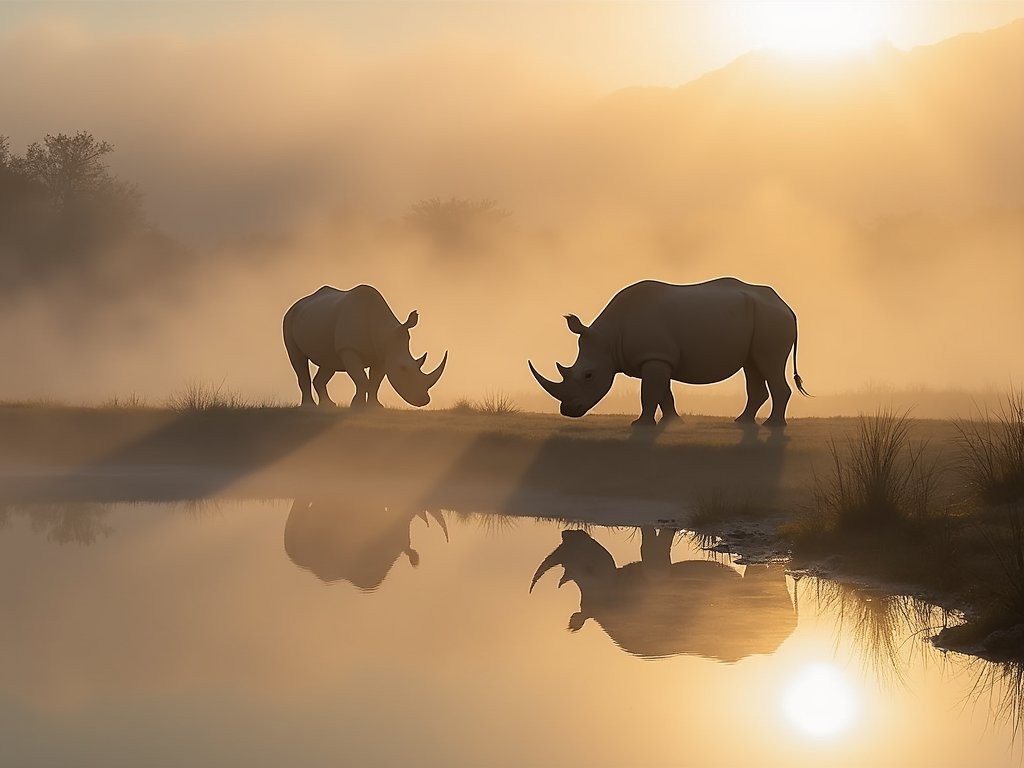
💡 Pro Tips
- Check weather forecasts for foggy mornings which create magical atmospheric conditions
- Bring a bean bag or window mount for camera stability during wildlife photography
- Look beyond the 'big' animals—some of the most compelling images come from smaller creatures and birds
Final Thoughts
As I packed away my camera gear on Sunday evening, scrolling through the weekend's photographic harvest, I realized Port Elizabeth had given me a perfect visual sampler of South Africa's soul. From the dignified presence of elephants at Addo to the playful penguins at SANCCOB, from the cultural storytelling of Route 67 to the pristine coastlines of Sardinia Bay—PE offers photographers an accessible entry point to South Africa's diverse visual riches. The city's compact nature means you're never more than 30 minutes from your next shooting location, maximizing creative time during a short visit. Whether you're a seasoned professional or simply looking to elevate your travel photography, Port Elizabeth rewards those willing to chase the light and wait for moments. Até a próxima aventura fotográfica—until the next photographic adventure!
✨ Key Takeaways
- Port Elizabeth offers exceptional photography diversity in a compact area—wildlife, coastlines, and culture all within 30 minutes of each other
- Early morning and golden hour provide the most magical lighting conditions for both wildlife and landscape photography
- Conservation centers like SANCCOB offer unique wildlife photography opportunities while supporting important ecological work
📋 Practical Information
Best Time to Visit
October through April (South African spring and summer)
Budget Estimate
$150-250 per day including accommodation, car rental, and park entries
Recommended Duration
2-3 days minimum for photography
Difficulty Level
Beginner To Intermediate

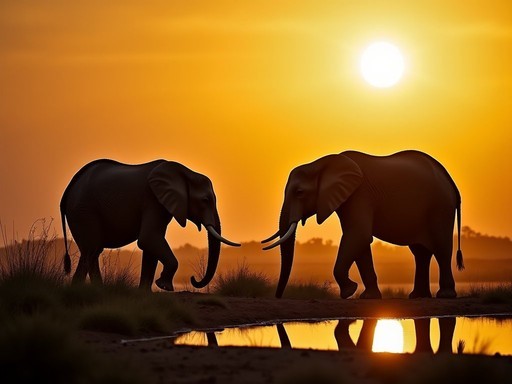






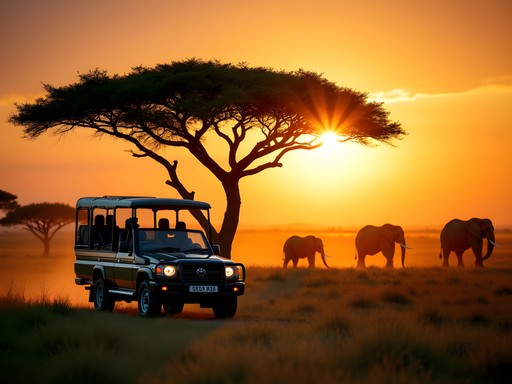
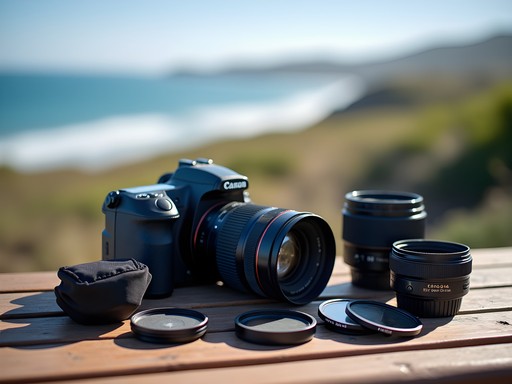
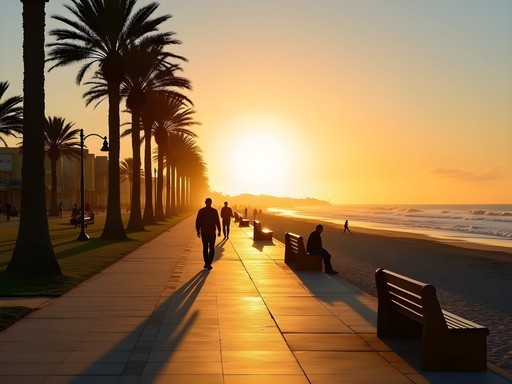
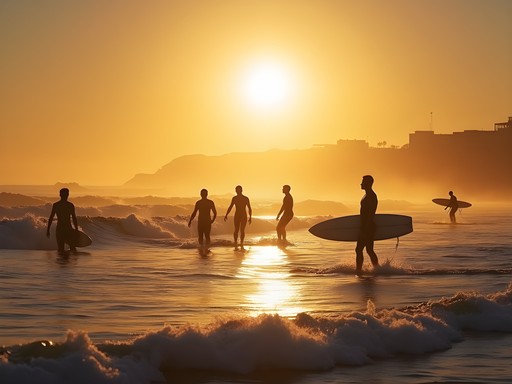
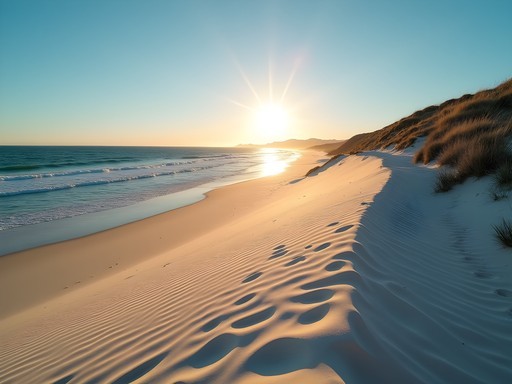
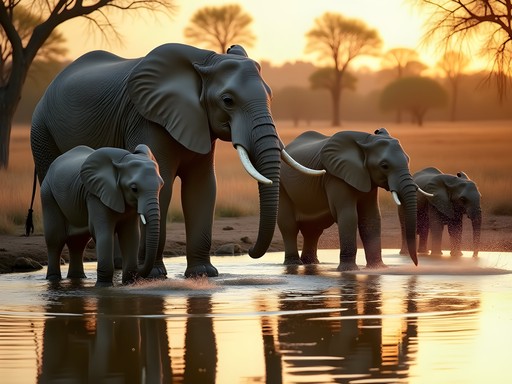


Comments
Sarah Powell
Marco, your timing at Addo Elephant Park is spot on. I visited last year and made the mistake of arriving mid-day when the light was harsh and the elephants were less active. Your early morning approach clearly paid dividends in those golden-hour shots! I'd add that the park's western section tends to be less crowded and offers some intimate wildlife encounters if photographers are patient. For anyone planning a visit, I'd recommend bringing a telephoto lens with good stabilization - I used my zoom lens and it was perfect for capturing those distant wildlife moments without disturbing them. Did you encounter any challenges with the changing coastal light at Sardinia Bay?
beachcomber92
Sarah - was the western section easy to access? Going in December and trying to plan my route through the park.
Sarah Powell
Yes, very accessible! Just less visited by tour groups. December will be busy season though, so I'd recommend arriving at park opening.
wanderchamp
Those penguin shots are incredible! Going to PE next month and definitely adding the rehabilitation center to my list now.
Sarah Powell
The penguin center is amazing! Try to go during feeding time if you can - it's usually mid-morning. The staff are super knowledgeable too.
wanderchamp
Thanks for the tip! Will definitely try to catch the feeding time.
beachtime
Just booked my trip after seeing these photos! Can't wait!
mountainlegend
What camera setup did you use for the wildlife shots? Especially those action shots of the elephants spraying water!
Kimberly Murphy
Marco, your post brought back amazing memories! I spent a week photographing PE last summer and it's truly underrated. One tip for anyone heading there: Route 67 is even more photogenic at sunset when the colors on the art installations pop against the golden light. Also, don't miss the Cape Recife Nature Reserve for shore birds - I spotted over 20 species in one morning! The lighthouse there makes for stunning compositions too. Your elephant shots have inspired me to return and focus more on Addo next time!
roamrider
First time heading to PE next month. Is the penguin center good for amateur photographers or do you need pro gear?
Kimberly Murphy
The penguin center is brilliant for all levels! I got amazing shots with just my phone camera last time. The penguins get quite close and the staff are super accommodating if you let them know you're there to photograph. Go around 3pm when they're most active!
roamrider
That's great to hear! I only have a basic DSLR so was worried. Thanks for the timing tip too!
beachtime
Those coastal shots at Sardinia Bay are stunning! Adding this to my bucket list!
mountainstar
Your photos of Addo Elephant Park are incredible, Marco! I visited last year and struggled with the early morning light. Did you use any specific filters for those elephant silhouettes against the sunrise? I'm heading back in November and definitely want to try that spot you mentioned near the watering hole. The penguin rehabilitation center is also on my list this time!
Bryce Diaz
Not Marco, but I've shot at Addo several times. For those morning elephant shots, try a graduated ND filter to balance the bright sky with the darker foreground. Position yourself with the sun behind the elephants about 30 minutes after sunrise for that golden rim lighting. The watering hole near the main camp is perfect for this!
mountainstar
Thanks for the tip, Bryce! I've been meaning to invest in a good ND filter. Any specific recommendations?
Bryce Diaz
I use the square filter system which gives a lot of flexibility for landscape work. Worth every penny for those sunrise/sunset shots at Addo!
TravelBug92
Those penguin shots are adorable! Added to my bucket list!
WanderingLens
Great post! Planning a trip to PE in November. Is Route 67 walkable with camera gear or better to drive between spots?
freeking
Not Marco but we walked it last week! Totally doable with a camera bag. Some steep parts but the murals are worth it. Just keep valuables close in some areas.
Marco Sharma
Agree with @freeking - definitely walkable and better experienced on foot. The stairs give you great elevated perspectives for urban shots. November should have beautiful light too!
Venture X
Premium card with 2X miles, $300 travel credit, Priority Pass